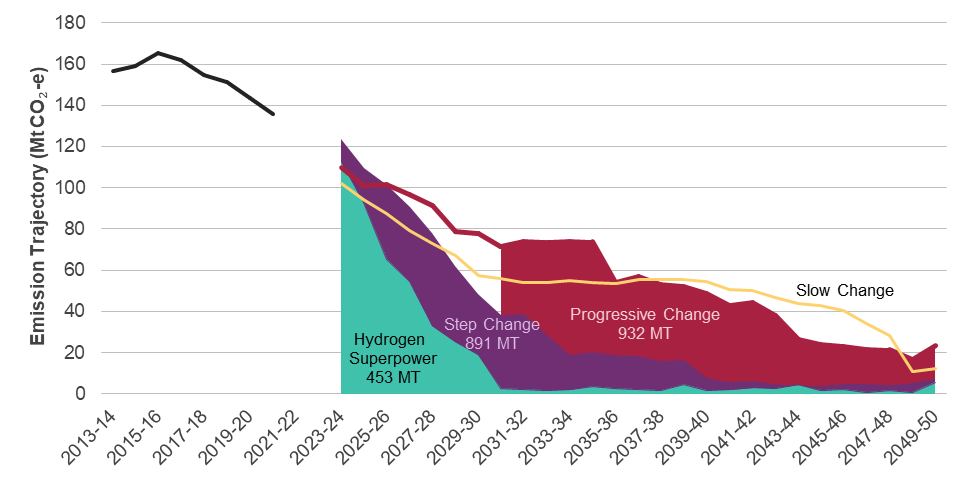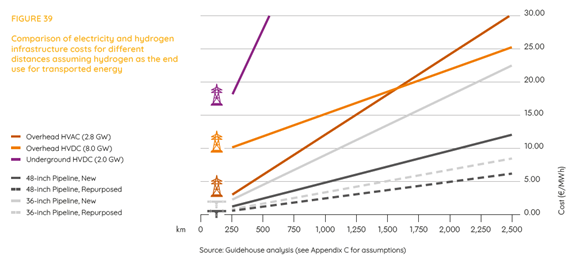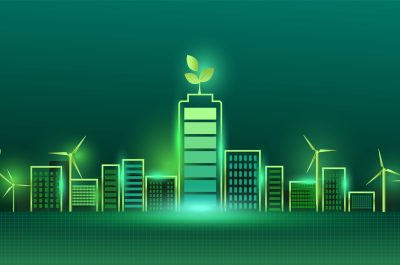Hydrogen super power
Scenarios, such such as those included in the Australian Energy Market Operator’s (AEMO) Integrated System Plan (ISP), can help with future infrastructure planning. Many organisations use scenarios to better understand the implications of different policy settings and to inform investment decisions. The scenarios themselves are not predictions, but rather storylines that cover a wide space of potential futures. AEMO uses scenarios to help shape its ISP. As its CEO Daniel Westerman writes in the foreword of the draft 2022 ISP:
Since 2018, the Integrated System Plan (ISP) has guided industry and government on the best investments to supply affordable and reliable electricity to Australian homes and businesses.
Unfortunately, the ISP is not truly an integrated energy systems plan, as it focusses only on electricity transmission opportunities. A fully integrated plan would consider different energy sources, transport options and end uses, and consider the interactions between these areas. The introduction of hydrogen as a scenario is an initial, positive step to the plan becoming more integrated. However, the fundamental assumption in the ISP is that hydrogen production will be connected to the National Energy Market (NEM). It is unclear if this will be the case as it will largely depend on the location of renewable energy zones, hydrogen production plants, export ports for hydrogen exports and the infrastructure connecting all of these parts – and whether energy transmission will be via electricity or hydrogen pipelines.
The hydrogen superpower scenario
Energy Networks Australia (ENA) supports domestic use of hydrogen as an alternative to natural gas and its potential as an export fuel. The introduction of hydrogen enables sector coupling between traditionally separate electricity and gas sectors. This creates several cross sector opportunities to increase reliability of the energy system.
The Hydrogen Superpower scenario is highly ambitious. It is the only scenario consistent with limiting global warming to 1.5°C while also largely replacing natural gas with hydrogen for domestic use and building a hydrogen export industry. This 1.5°C assumption – not the inclusion of hydrogen – results in the fastest emission reductions in the NEM and the fastest closure of existing coal fired generators.
Figure 1: Emissions trajectory for the NEM (Source: AEMO (2021), Draft 2022 Integrated Systems Plan, Figure 8).
The role of hydrogen in reducing emissions by 2030 is limited, as only 2 TWh of electricity is consumed to support the domestic hydrogen industry compared with 243 TWh for underlying NEM electricity demand. By 2050, the electricity demand for hydrogen production increases to support an export industry. The draft 2022 ISP rightly describes the scale of development in this scenario as monumental, requiring a ten-fold increase in the current NEM capacity.
| Underlying consumption | 2030 | 2050 |
| NEM underlying consumption (TWh) | 243 | 330 |
| Hydrogen consumption – domestic (TWh) | 2 | 132 |
| Hydrogen consumption – export (TWh) | 49 | 816 |
| Total | 294 | 1278 |
Table n: Underlying electricity consumption for the Hydrogen Superpower scenario (Source, AEMO, 2022 draft ISP, Figure 7).
The emissions savings from switching the renewable hydrogen for domestic use are not included in the draft ISP. The 132 TWh of electricity consumed in 2050 would produce around 332 PJ[1] of hydrogen, and potentially replace that much natural gas resulting in a further emissions reduction of around 17 million tonnes CO2.
Getting hydrogen to the customer
Under the ISP scenario hydrogen would be delivered to domestic customers via gas distribution networks or to international customers via shipping[2]. Connecting hydrogen to the identified renewable energy zones requires an understanding of the full infrastructure needs to produce hydrogen and then to deliver that hydrogen. The draft ISP appears to assume that electricity transmission lines would play a key role to deliver electrons to hydrogen production sites, which would be located close to the customer. That assumption should be tested.
A report by consultancy firm Guidehouse[3] found that pipelines – both newly built and repurposed ones and excluding storage costs – are two to four times more cost-effective than power lines for high-volume transport of energy when the desired end-product is hydrogen.
Fig 2: Relative transport infrastructure costs for hydrogen
Currently, the cost of producing hydrogen is largely a function of the capital cost and the cost of electricity. As electrolysers become more widely deployed, the main impact on the price of hydrogen will be the cost of electricity. Whether these electrolysers will be grid connected or powered behind the meter will largely depend on the commercial impacts of higher electricity prices and levels of utilisation for grid-connected electrolysers compared with stand-alone ones. With reducing electrolyser costs, it is likely that lower electricity prices (ie not NEM connected) will produce the cheapest hydrogen. Other factors also need to be considered such as the availability of water, and whether additional infrastructure is required to deliver water as a feedstock in the electrolysis plant. Where to now?
AEMO[4] is proposing to include a fifth scenario in its next round of forecasting to consider the impacts on the gas industry and gas networks. Industry has expressed interest in such a scenario to account for the role of green hydrogen and biomethane. This additional scenario would provide an alternative to the electrification scenario by considering opportunities where green molecules can be used to decarbonise gas use instead of green electrons.
Some of the key features that should be covered by this scenario include:
- The impact of time of use on overall retail prices and emission profiles.
- The role of gas infrastructure to deliver the lowest cost energy to customers.
- The pathway to transition to net zero emissions in both electrification and renewable gas scenarios.
- The sector coupling opportunities of hydrogen.
The role of modelling
Scenario modelling is a useful tool to better understand a range of potential outcomes. Care should be taken not to interpret scenario modelling as a prediction or as a plan, but that the results from the scenarios can reduce uncertainty in planning by considering possible implications of different levels of policy and technology development.
[1] Electrolyser efficiency of 70 per cent assumed.
[2] Shipping could be in the form of liquified hydrogen or ammonia.
[3] Guidehouse (2021), European hydrogen backbone: Analysing future demand, supply and transport of hydrogen.
[4] https://aemo.com.au/consultations/current-and-closed-consultations/2022-consultation-on-forecasting-assumptions-update




